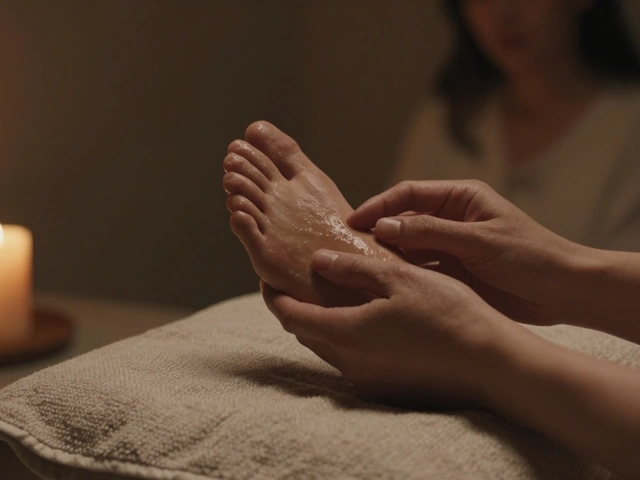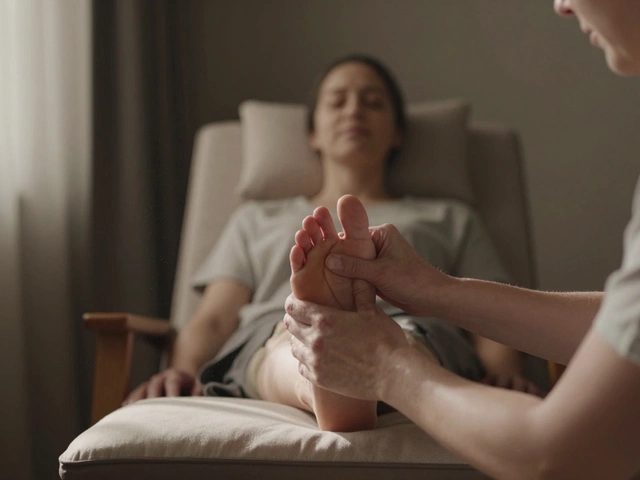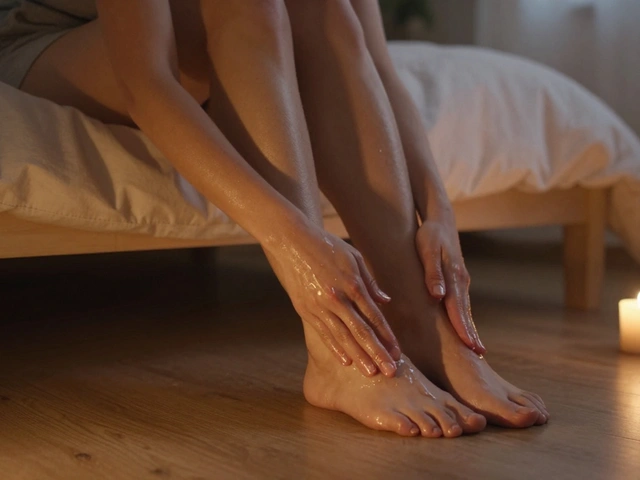In today's fast-paced world, finding a good night's sleep can feel like chasing a dream. Whether it's the weight of stress or the countless distractions of modern life, many of us find ourselves tossing and turning each night. However, the solution might be just a massage away—specifically, a Swedish massage.
Renowned for its gentle yet effective approach, Swedish massage aims to promote relaxation through a series of smooth, gliding strokes. This technique not only alleviates tension in the muscles but also has a profound impact on the nervous system. The calming effect of these movements can significantly reduce anxiety levels, enabling the mind to unwind and prepare for sleep.
Delve into the world of Swedish massage, where touch becomes a language of its own, speaking directly to your need for relaxation and restorative sleep. Discover how this ancient practice can become a modern remedy for the sleepless nights that plague so many, and learn some simple tips that you can incorporate into your routine to maximize these soothing benefits.
- Understanding Swedish Massage
- The Connection Between Massage and Sleep
- Techniques to Enhance Relaxation
- Scientific Insights into Swedish Massage
- Tips for Maximizing Benefits at Home
Understanding Swedish Massage
Swedish massage has long held a prominent place in the realm of therapeutic bodywork, known primarily for its gentle and rhythmic strokes designed to ease muscle tension and enhance circulation. Originating in the early 19th century, it was developed by a Swedish physiologist named Per Henrik Ling, who sought to create a system that combined the health benefits of gymnastics and the relaxing effects of massage. The techniques involved target the superficial layers of muscle using five distinct methods: effleurage, petrissage, friction, tapotement, and vibration. These techniques work in harmony to encourage relaxation and relieve stress, making it a popular choice among those seeking a peaceful escape from daily pressures.
Effleurage includes smooth, gliding strokes that warm up the muscles and prepare the body for deeper work, setting the stage for a more profound experience. Petrissage, characterized by kneading and rolling, works deeper into the tissues, releasing knots and tension. Friction, involving circular movements with the fingers and palms, stimulates circulation across various muscle groups. The tapotement technique uses a percussive tapping movement to stimulate sluggish muscles, while vibration is applied to shake tissues, promoting relaxation and reducing strained zones. Each session of Swedish massage is meticulously tailored to meet the unique needs of the individual, ensuring that they emerge feeling balanced and renewed.
The benefits of Swedish massage extend beyond mere physical relief. According to a study published in the Journal of Alternative and Complementary Medicine, individuals who received regular Swedish massage reported significant improvements in mood, quality of sleep, and lower anxiety levels. These findings underscore the intrinsic connection between mind and body, highlighting the massage's capacity to nurture not just the physical form but also mental clarity. As Dr. Maria Hernandez-Reif, a researcher and massage therapy expert, puts it, "Massage therapy is an investment in your health, offering a holistic approach to wellness that few other treatments can match."
Swedish massage is often revered for its simplicity, yet its intricacies are what make it so effective. The therapist’s understanding of body mechanics allows for the adjustment of pressure and technique, aligning with the client's comfort and therapeutic needs. It's not just about muscle relief; it's a dance of rhythm and pressure that speaks to the body’s natural ability to heal. This type of massage is not only accessible within the confines of spa settings but practiced world-over by skilled therapists trained to invoke calmness and encourage restful sleep.
In grasping the full breadth of Swedish massage, it's crucial to recognize the depth of its practice across cultures and its evolution into various disciplines within modern wellness. A comprehensive session often lasts between 60 to 90 minutes, providing ample time to address stress-held areas while promoting tranquility. Through understanding its origins, techniques, and profound benefits, anyone can appreciate why Swedish massage stands as a cherished remedy in holistic health. Its nurturing touch is more than skin-deep, touching the very essence of what it means to relax and rejuvenate.
The Connection Between Massage and Sleep
The intricate relationship between Swedish massage and improved sleep quality is bolstered by both scientific insights and experiential understanding. Swedish Massage, with its fluid strokes and gentle kneading, stimulates the body’s production of serotonin. This neurotransmitter plays a critical role in regulating sleep cycles. By promoting the release of serotonin, massage essentially guides the body into a more restful state. What happens during a session is a gradual slowing down of the nervous system, which in turn preps the mind for sleep. Many people report a significant reduction in anxiety and stress, both of which are notorious culprits of insomnia.
It's not just about feeling relaxed either; there's a physiological transformation happening beneath the skin. Studies have shown that regular massage can decrease cortisol levels, the hormone related to stress. Lower cortisol levels mean less internal tension and more room for melatonin, the hormone that dictates sleep patterns, to do its work. An interesting note here is how massage also affects heart rate. As heart rate slows down, the body naturally enters a pre-sleep state, which reinforces the idea that massage can basically act as a natural sedative. Consider this bit of insight from researchers at the University of Miami School of Medicine, who emphasized,
"The tactile stimulation of massage aids the body’s own mechanisms in achieving a calm state that aligns closely with sleep readiness."
Beyond hormonal effects, the physicality of massage works wonders on muscular tension. A body free from physical tightness inevitably finds it easier to fall asleep. Picture lying in bed after a strenuous day—knots in your shoulders and neck can keep you tossing for hours. Swedish massage addresses these trouble areas methodically, stroking them into release and allowing you to slip more easily into rest. Massage therapists often focus on areas like the upper back and neck, where tension tends to accumulate most. By coaxing these muscles into relaxation, the entire body is given a cue that it’s time to power down.
Moreover, let’s dive into the concept of sensory expectations. The human touch effect is renowned for a sense of security and warmth it provides, both crucial for sleep. From time immemorial, touch has been a calming force, akin to a mother’s comforting embrace. Swedish massage encapsulates this through its rhythmic patterns and intentional movements, making it a direct line to peace. For people suffering from insomnia, such touch, whether from a therapist or even learning to apply it oneself, could transition their stressful sleep attempts into fulfilling rest.
In essence, the power of Swedish massage extends beyond mere relaxation—it’s a multi-dimensional approach that tackles the physical, hormonal, and psychological barriers to good sleep. By engaging in this practice regularly, individuals unlock the profound benefits of restful nights, which in turn contribute to a richer, more vibrant life. Many begin to notice not only improvements in their sleep but also in mood, productivity, and even pain management throughout the day.
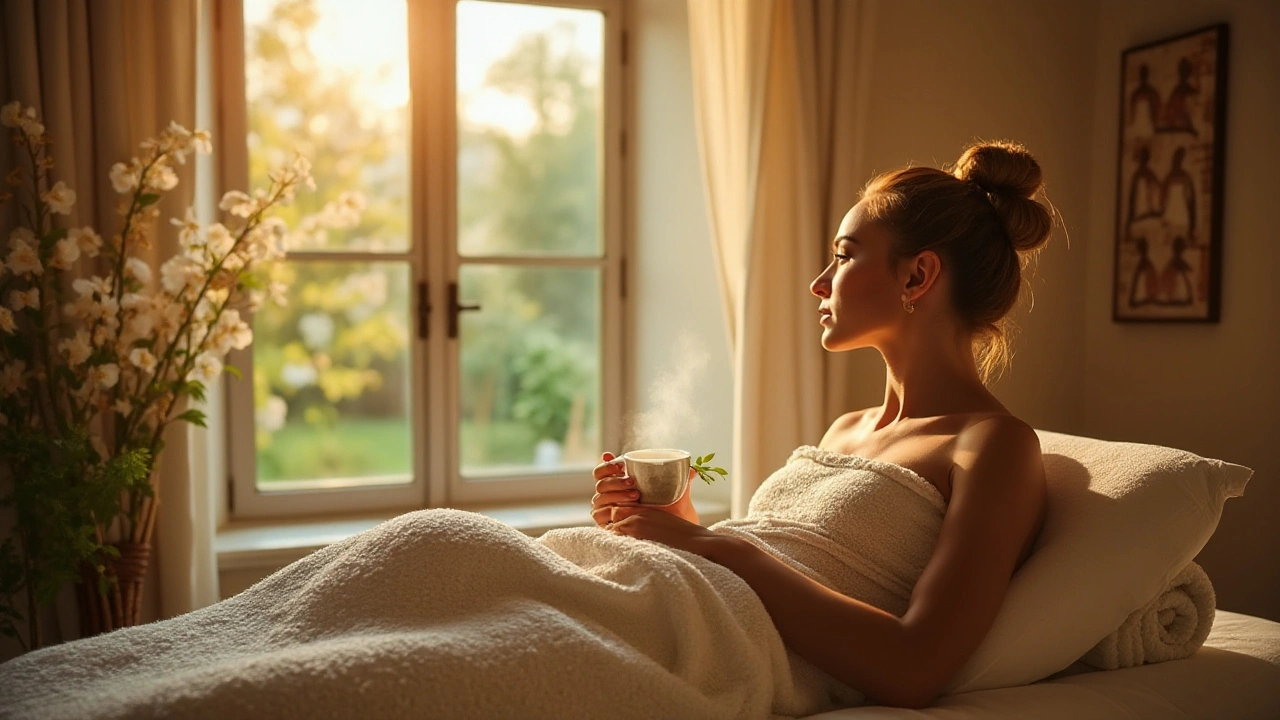
Techniques to Enhance Relaxation
Swedish massage is a harmonious blend of artistry and therapeutic science, dedicated to promoting deep relaxation. To truly unlock its potential, understanding the techniques used by therapists worldwide can elevate your experience to a new level of tranquility. These techniques are specifically designed to alleviate tension and stress, thereby improving your overall well-being and aiding in sleep improvement. One of the cornerstone techniques is effleurage, which involves long, sweeping strokes that glide rhythmically over the skin. This method serves as both an introduction to the massage and a way to warm up the muscles, setting the stage for deeper, more targeted techniques.
The magic of effleurage lies in its ability to stimulate blood flow and lymphatic circulation, working synergistically to flush out toxins from the body while delivering more oxygen to the muscles. These strokes are not just soothing; they help to engage the parasympathetic nervous system, which is crucial in signaling the brain to relax and prepare for sleep. Muscles become more pliant and receptive, allowing for enhanced manipulation with minimal discomfort. As the therapist transitions into petrissage, which consists of kneading and compression techniques, you may notice a further deepening of relaxation, reducing nodules of tension and significantly lowering stress markers in the body.
Swedish massage is adaptable, with techniques like friction that focus on deeper muscle work by creating heat through brisk circular movements. This heat is a vehicle for releasing not just physical tension, but also emotional strain that can cumulate in our bodies. The repetitive, rhythmic nature of friction can serve as a meditative experience, calming the mind and promoting a sense of inner peace. For those with specific tension points, cross-fiber techniques focus on loosening up these spots, while enhancing flexibility and reducing pain, crucial for achieving undisturbed sleep cycles. A study published in the Journal of Clinical Sleep Medicine highlighted that participants who received regular Swedish massages reported significant improvements in their sleep quality, underscoring the efficacy of these techniques.
Besides these, incorporating tapotement, a technique using rhythmic tapping or patting, can invigorate the body and regulate energy flow, leaving you both relaxed and recharged. While it might be less soothing for bedtime, in moderation it can invigorate day-time relaxation, preparing the body for a smoother transition into slumber later on. It requires a delicate balance—a skilled therapist will adjust the intensity to fit personal comfort and relaxation levels, creating a massage that's as unique as your fingerprint.
For anyone looking to integrate Swedish massage techniques into their daily relaxation routine, there are simple methods to practice at home. Start with self-effleurage, using soft, sweeping motions with the palms of your hands after applying a gentle massage oil. Target areas like the neck, shoulders, and arms, which often bear the brunt of daily tension. Following the effleurage, apply light, circular friction motions to focus on particularly tense areas and assist in clearing your mind before bedtime. While nothing substitutes a professional massage, these home techniques can be a wonderful introduction to the benefits of Swedish massage, encouraging relaxation and preparing you for a restful night's sleep. So why toss and turn, when a pathway to rejuvenating sleep lies at your fingertips?
Scientific Insights into Swedish Massage
Swedish massage, with its roots in the Western world's pursuit of holistic healing, is more than just a therapeutic art—it's a practice backed by science. This widely studied technique is designed to relieve muscle tension, improve circulation, and usher the body into a state of relaxation, which has fascinating implications on sleep. At the core of its benefits is its impact on the nervous system—specifically the parasympathetic nervous system. Swedish massage promotes shifts that help the body transition from a fight-or-flight state to a restorative state, encouraging rest and recovery.
Research has shown that massage can significantly lower cortisol levels. Cortisol, commonly known as the stress hormone, can wreak havoc on a person's ability to achieve restful sleep. Lowering cortisol levels through soothing Swedish massage techniques can balance the body's natural sleep-wake cycle, aiding those struggling with insomnia. One study published in the International Journal of Neuroscience found that individuals who received a 30-minute massage twice a week for five weeks showed remarkable improvements in sleep quality and duration. The rhythmic, gentle strokes of Swedish massage are designed to lull the nervous system, helping to quiet the relentless mind and support the physiological processes necessary for deep, rejuvenating sleep.
Moreover, massages can increase the production of serotonin, a neurotransmitter associated with feelings of well-being and happiness. Serotonin is also a precursor to melatonin, the hormone that governs the body’s circadian rhythms, underscoring the intricate biological dance between massage and sleep. As serotonin levels rise, so do the chances of melatonin synthesis, a critical factor in embarking on the journey to restful slumber. A 2021 study by the Touch Research Institute highlighted that consistent relaxation techniques like Swedish massage improved overall sleep patterns among participants, reinforcing the link between tactile therapy and sleep health.
Additionally, the benefits of Swedish massage extend to physical ailments that can disrupt sleep. By increasing circulation and reducing muscle soreness, it helps individuals with conditions like chronic pain or arthritis achieve a more comfortable sleeping posture. This is particularly beneficial as discomfort is a common barrier to uninterrupted sleep.
“The soothing power of touch through massage holds promise as a simple, non-invasive method to promote greater health and well-being,” reported Dr. Tiffany Field, Director of the Touch Research Institute.This ensures that embracing Swedish massage techniques can be an effective, inclusive solution for various sleep disturbances caused by both mental and physical stressors.
For anyone seeking to understand how to harness these benefits, it’s worth noting that a single session might not suffice. Consistent massages often yield the best results, much like exercise or meditation. Embracing a regular schedule of massage therapy can lead to accumulative benefits, promising a path to improved relaxation and increased overall sleep efficiency. Engaging in a dialogue with a trained massage therapist can help tailor sessions to meet individual needs, maximizing the benefits of Swedish massage as a solution for sleepless nights.
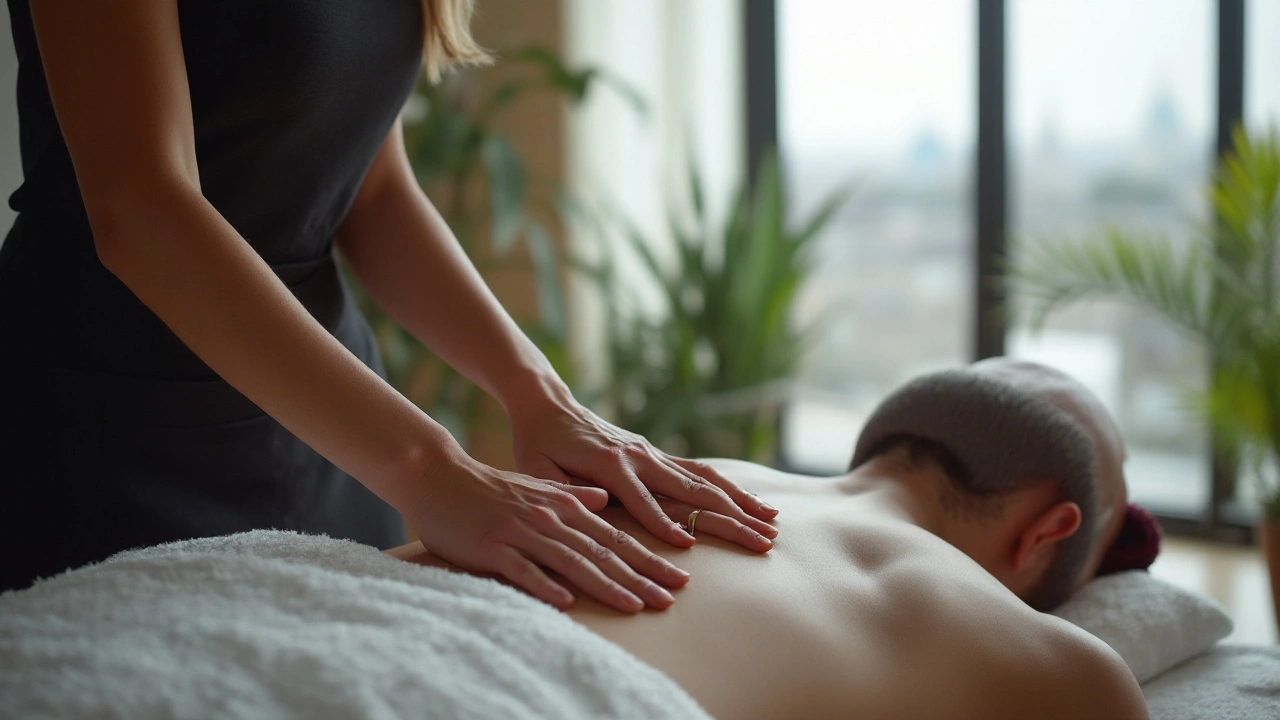
Tips for Maximizing Benefits at Home
Creating a sanctuary for sleep at home can be both a rewarding and therapeutic endeavor, especially when you incorporate elements of a Swedish massage. While professional massages are highly beneficial, introducing this experience into your personal space can equally cultivate tranquility and improve sleep quality. Start by setting up your environment. A calm, serene space is essential. Consider dim lighting; perhaps use candles or a Himalayan salt lamp to bathe your room in a gentle glow. The right ambiance can make all the difference, turning an ordinary room into a haven of peace. Infuse the air with soothing scents like lavender or chamomile using essential oils or a diffuser. These aromas are known to support relaxation and lull the senses, helping to prepare your mind for restful slumber.
Once the mood is set, focus on the technique. You might not be a professional masseur, but simple adaptations can go a long way. Begin with basic strokes, utilizing a massage oil or lotion for ease. Use long, flowing movements with gentle pressure to replicate the sensation of a Swedish massage, focusing on areas where you typically hold tension like the neck, shoulders, and back. Paying attention to rhythmic breathing as you apply the strokes can enhance the experience. A slow, deep breath can help in releasing physical stress, tying the mind and body into a cohesive, relaxing exercise. “Massage is not just a luxury, it’s a way to a happier and healthier life,” a sentiment attributed to expert therapists in the wellness field, echoes the profound connection between this practice and holistic well-being.
Incorporating self-care rituals can also amplify the benefits of these in-home massages. Perhaps before beginning, a warm bath infused with Epsom salts might help your muscles to unwind. Afterward, wrap yourself in a soft, cozy robe as a tactile cue to relax. Keep your phone and other electronics at bay to avoid disrupting your newfound tranquility. Commit to this moment without various digital intrusions, allowing your mind to detach from day's worries. For those who appreciate statistical insights, the global demand for relaxation techniques, which includes massage therapy, has seen a steady increase of approximately 20% annually, as reported by wellness market analytics—a testament to their growing appeal and efficacy.
To supplement the physical elements of the massage, consider engaging in mindfulness or meditation exercises post-massage. These practices help bridge the transition from wakefulness to sleep, gradually slowing your mental processes. Guided meditations focusing on body scanning or breathing can be particularly beneficial following a massage. Visualizing a serene scene or repeating calming affirmations may also ease your path to sleep. Highlighting this approach, a recent study by the American Sleep Association revealed that incorporating consistent mindfulness practice can reduce insomnia symptoms by up to 50%, indicating the potential impact of such habits.
Finally, cultivate a routine. Consistency is key in training your body to anticipate relaxation, thus readying itself for sleep. Allocate specific times for your massage sessions to establish a familiar, comforting pattern. Over time, this ritual becomes a cherished part of your bedtime routine, signaling to your body and brain that it's time to wind down. The regular practice of relaxation techniques will not only rejuvenate your evenings but gradually transform your nights into restful experiences, contributing to a healthier and more balanced life.






